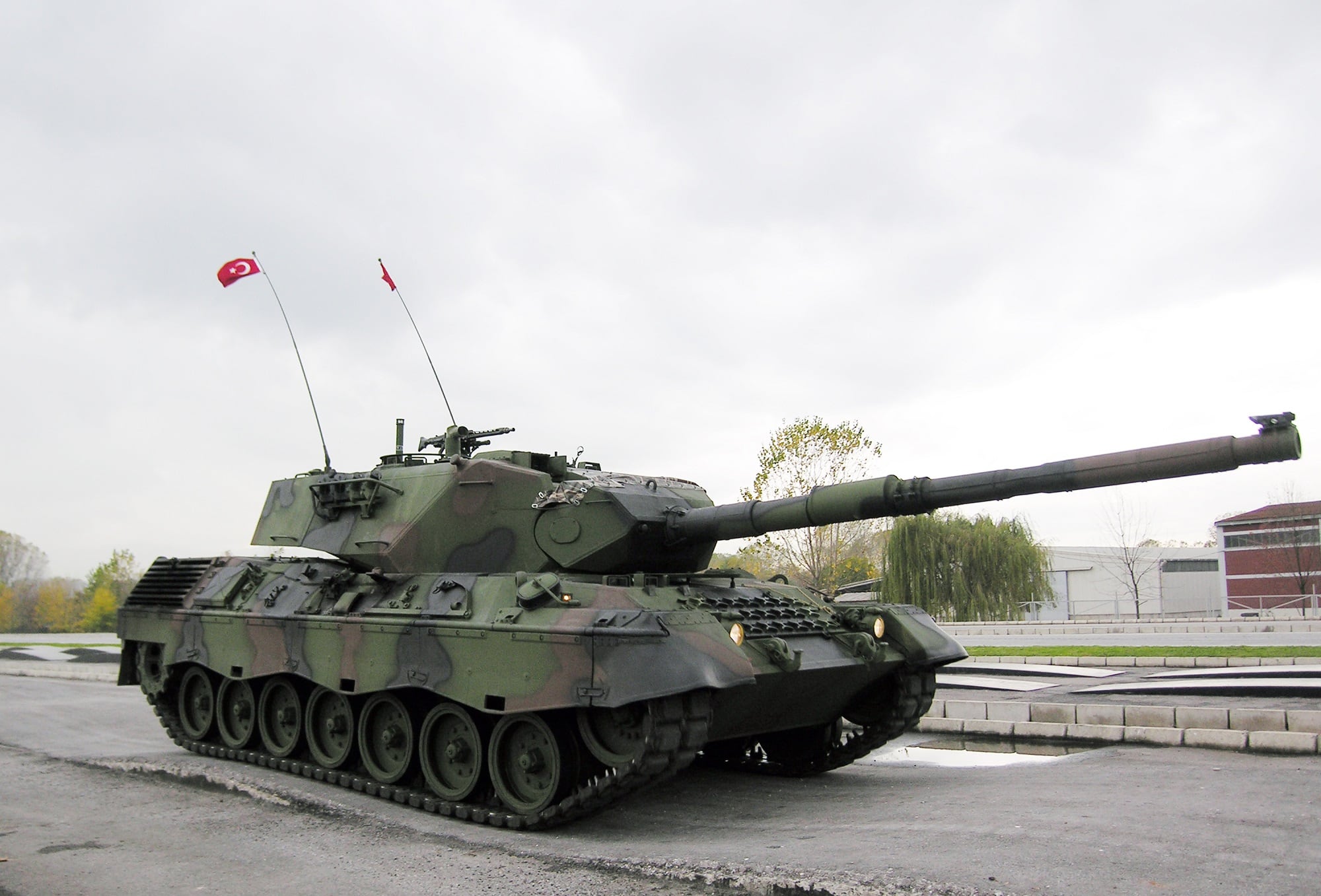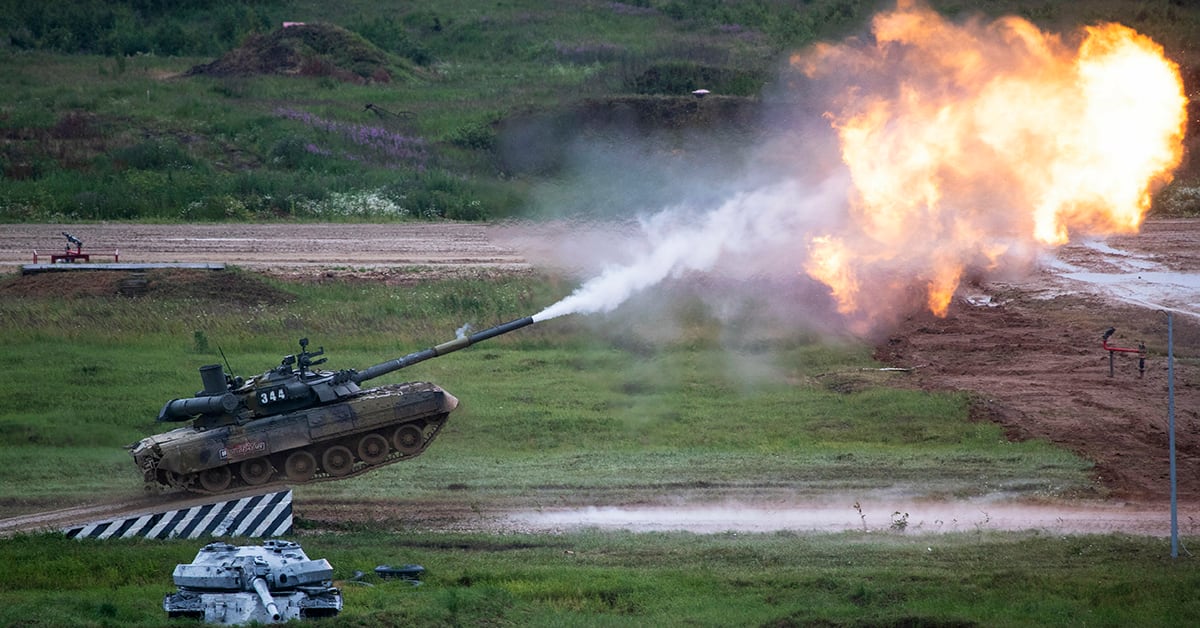As part of a security assistance package in February 2023, Germany, Denmark, and the Netherlands collectively pledged to send over 100 Leopard 1A5 tanks to Ukraine. The first have already been delivered and are reported to be in service.
Entering production in 1964, the Leopard 1 has long since been replaced by new generations of main battle tanks in Western militaries, although some remain in service. Many served in Bosnia, Kosovo, Afghanistan, and the Kurdish-Turkish conflict. Proven in combat, the Leopard 1 was an effective Cold War-era main battle tank.
However, many question its effectiveness and survivability in modern wars.
The German defense companies Rheinmetall and FFG each bought 90 Leopard 1A5 tanks in the early 2000s from Denmark and kept them in storage for resale, however, their conditions varied and most remained in need of refurbishment. Many of these mothballed tanks are the Leopard 1A5 DK, previously used in the Dutch Army and modified in an attempt to stay on par with modern threats.
The 1A5 DK variants have several preexisting upgrades that improve their fighting capabilities. These models have been upgraded with improved stabilization systems for their 105mm canon, composite armor to help defend against anti-tank projectiles, improved detection and communications systems, a more powerful diesel engine, and upgraded suspension.

The purpose of main battle tanks in combat has been evolving for decades, and their potency has been reduced by the advancements in anti-tank weaponry, however, their utility has by no mean expired. In the past, the Leopard 1 has often been more comparable to the Russian T-55 and T-62.
The Leopard 1 is maneuverable but only has 70mm armor while later models of the T-72′s armor are 700mm at its thickest. Its armor may not be as resistant, however, and the survivability of most tanks today is more dependent on their active protection systems that can eliminate anti-tank guided missiles and UAS threats.
While there is debate on whether the Leopard can consistently penetrate the armor of the T-72, its main gun is undoubtedly accurate. Where the Leopard has seen action, it has consistently out-shot Russian tanks, both in accuracy and rate of fire.
The T-72, the most common tank used by Russia in Ukraine, first entered production in 1971 and has since been modified to meet modern standards. This version, the T-72B3, has improved reactive armor, a new 125mm main cannon, and night/day sights for improved targeting. However, these additions do not remedy the tank’s fatal flaw - its ammunition storage for its autoloader, which sits directly below the turret. When sustaining a hit to this area, the resulting blast tends to blow the turret clean off and kill the entire crew..
The T-80 has problems of its own, primarily concerning heavy fuel consumption and thus limited range. In the First Chechen War, the T-80 failed to perform, taking heavy losses from rebels armed with RPG-7V and RPF-18 rocket launchers. Russia has already lost at least 1,500 of its tanks, mainly these two models, in Ukraine. Despite these issues, the T-72 and T-80 are still used by Russia and other armies across the globe, primarily due to their historic availability and low cost of production and purchase.

These comparisons may not be significant when measuring the effectiveness of the Leopard 1A5 in Ukraine. The Leopard may not need to be on par with modern Russian MBTs to be effective on the battlefield. Tank-on-tank engagements are rare in Ukraine, and most Leopard 1A5s may never engage tanks such as the T-72, T-80, or T-90. Instead, they can serve a vital role as fire support for infantry units and be used to eliminate Russian APCs and IFVs. Their 105mm main gun, although not as powerful as modern 120mm tank weaponry, allows the Leopards to carry more ammunition and may be more suited to the missions being performed in Ukraine.
This raises another question – is it worth sending NATO armor when Ukrainians are already trained to use Warsaw Pact-era armored vehicles? If the West’s intention is the maintain a long-lasting military relationship with Ukraine - the answer is yes. Training on NATO platforms would be most sustainable as there are only a limited number of older Russian tanks available for future use.
Older T-72s and T-80 which were in Ukraine’s arsenal have and will continue to be destroyed and will become increasingly difficult to replace as stocks in the West are depleted. The last T-72 was produced in 1991 and the last T-80 in 2001. It will take time and resources to train Ukrainian soldiers on the Leopard 1A5, however, this is necessary if NATO platforms are to become the standard in coming years.
While the Leopard 1A5 is many other tanks on the Ukrainian battlefield, what will matter most is how Ukrainian commanders choose to use the Leopard 1A5, and if they can be refurbished effectively. Drawing on its strengths, staying mobile and shooting from long distances could maximize the Leopard’s potency. Purposed to support infantry units or other armored vehicles, they could save lives, striking targets and clearing Russian fortifications from a distance.
Used to defend locations in the rear, they could free other more advanced MBTs to fight on the frontlines. The nature of combat and the function they can serve as fire support renders them useful in modern warfare. So, while they are not the most advanced or the most lethal on the battlefield, they can still perform a vital role.
Ethan Walton is a graduate of NYU’s MA in International Relations and currently maintains the Ukraine Weapons Tracker at The Forum on the Arms Trade, a network of civil society experts and a point of contact for strengthening public efforts to address the humanitarian, economic and other implications of arms transfers, security assistance, and weapons use.








